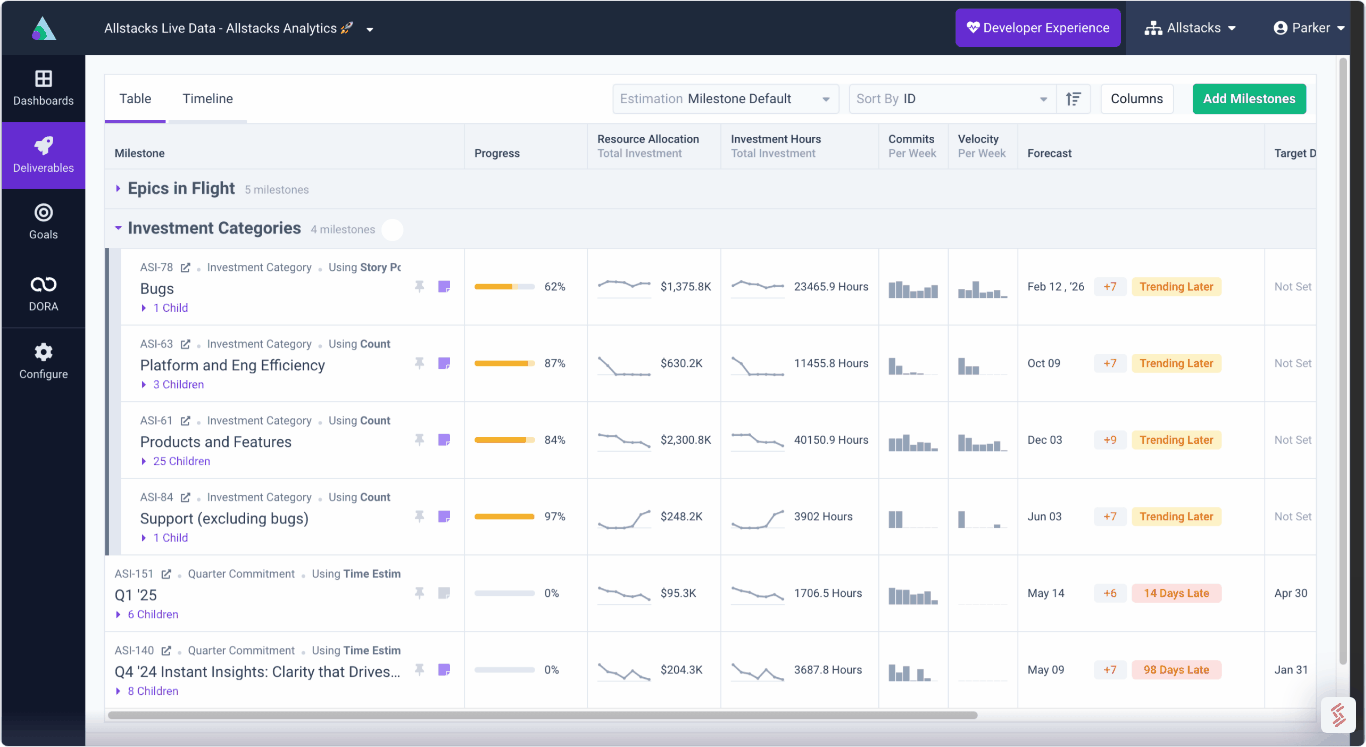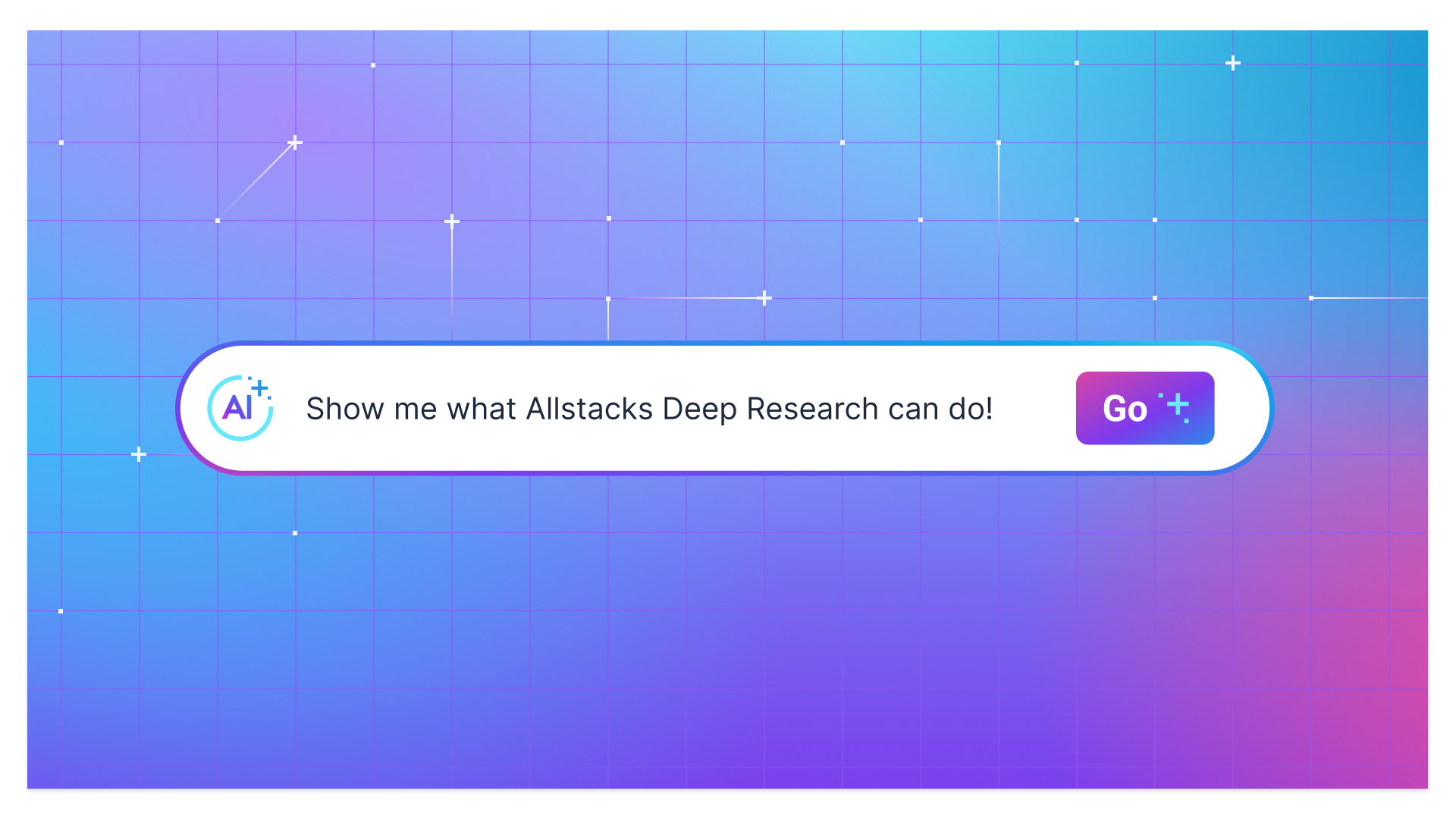.png)
Software Engineering Intelligence
-
Intelligence Engine
On-demand exhaustive AI-analysis
-
Engineering Investment
Complete visibility into time & dollars spent
-
360º Insights
Create meaningful reports and dashboards
-
Project Forecasting
Track and forecast all deliverables
DevEx
-
Developer Surveys
Create and share developer surveys
Software Capitalization
-
R&D Capitalization Reporting
Align and track development costs
The End of Reactive Engineering Management: Why the Identify-Analyze-Execute Cycle Is Killing Your Strategy
Welcome to the identify-analyze-execute cycle, the most expensive productivity trap in modern software development.
.png?width=1600&height=900&name=Copy%20of%20Blog%20Template%202%20-%201600x900%20(2).png)
Welcome to the identify-analyze-execute cycle, the most expensive productivity trap in modern software development.
The True Cost of Reactive Management
The reactive management cycle looks deceptively reasonable on paper:
- Identify - Notice a problem or have a hunch, then hunt through dashboards and metrics to validate your concern and find the trend
- Analyze - Determine root causes, understand who and what is involved, and decide on a plan of action
- Execute - Implement fixes and monitor whether the intervention worked
But here's what this cycle really costs organizations:
Strategic misfocus. While leaders spend countless hours identifying and analyzing current problems, they're not focusing on strategic opportunities. The urgent crowds out the important, and organizations optimize for what's visible in status meetings rather than what actually matters to business outcomes.
Narrowing options. By the time problems surface through traditional status reporting, solutions are expensive and alternatives are limited. The best time to fix a delivery risk is weeks before it impacts timelines, not days after it becomes critical.
Expertise scarcity. Comprehensive analysis across code, processes, and people requires senior-level expertise that most organizations can't afford to staff continuously across every project. So either analysis doesn't happen, or it happens too slowly to prevent costly surprises.
The "green status, red reality" problem. Teams manipulate status reports to avoid difficult conversations, creating a fog that prevents strategic clarity about what actually needs attention. Organizations solve the wrong problems at the wrong time because critical information remains hidden beneath fragmented data.
What Proactive Management Actually Means
Proactive management isn't just "faster reactive management." It's a fundamentally different approach to engineering intelligence:
Early warning systems that work. Identify delivery risks and requirement gaps weeks before they impact timelines—when intervention is still cheap and options remain open. Surface emerging issues before they cascade into crises, with specific root cause analysis that points to solutions rather than symptoms.
Evidence-based decision making. Leaders focus on the right problems with strategic clarity, backed by objective evidence from actual development activity rather than subjective status reports. No more "green status, red reality"—just truth.
Continuous intelligence without continuous investigation. Instead of consuming engineering leadership time in the identify-analyze-execute cycle, intelligence is delivered automatically and continuously. Organizations shift from reactive firefighting to proactive problem prevention.
Democratized expertise. Access senior consultant-level analysis across every project simultaneously without staffing expert analysts. Complex engineering intelligence becomes accessible to any stakeholder through natural language conversation, not locked behind technical expertise requirements.
The Technical Reality: Why Dashboards Can't Be Proactive
Here's the uncomfortable truth: You can't achieve proactive management with traditional dashboards and metrics tools. The architecture isn't capable of it.
Dashboards show you what happened. They're fundamentally reactive by design. Even "real-time" dashboards are showing you problems that have already occurred and solidified into patterns.
Proactive management requires something different: exhaustive analysis across interconnected development patterns. This means understanding how micro-level activities create macro-level risks. It means traversing every possible relationship between code commits, pull requests, project items, and contributor behaviors to identify patterns that predict future problems.
This level of analysis requires:
- A semantic data fabric that normalizes and enriches fragmented development data
- Graph-linking architecture that maps every pathway through your development lifecycle
- AI that can explore these pre-mapped routes systematically, not randomly
- Multi-layer analysis across code, processes, and people simultaneously
From Systems of Record to Systems of Action
The fundamental shift is this: Moving from tools that record what happened to intelligence that predicts what will happen and prescribes what to do about it.
Predictive intelligence identifies risks before they're critical. Multi-dimensional analysis across project items, pull requests, and commits delivers objective delivery and technical risk scores weeks before timeline impact.
Prescriptive intelligence provides immediately actionable recommendations with specific remediation actions, proposed assignees based on expertise patterns, and expected impact. No more "here's a problem, you figure out what to do"—intelligence that includes the solution.
Preventive intelligence eliminates status report politics through comprehensive analysis that makes subjective reporting irrelevant. When you have objective evidence from actual development activity, you can't hide problems behind optimistic status updates.
The Opportunity Cost Question
Perhaps the most important question: What is the opportunity cost of reactive versus proactive management?
When engineering leaders spend hours each week in the identify-analyze-execute cycle, that's essentially a full-time senior analyst salary consumed by administrative work. When organizations identify problems after they're expensive rather than while they're still affordable to fix, that's strategic capital wasted on crisis management rather than invested in growth.
When teams solve problems that seem urgent in status meetings instead of problems that are strategically important, that's innovation potential squandered on firefighting.
The shift to proactive management isn't about incremental efficiency gains. It's about transforming how engineering organizations operate—from reactive crisis management to proactive strategic partnership.
The Path Forward
Traditional engineering dashboards were revolutionary when they emerged. They brought visibility to previously opaque development processes. But they've reached their architectural limits.
The post-dashboard era isn't about better visualizations or more metrics. It's about AI-native intelligence that analyzes exhaustively, predicts accurately, and prescribes specifically—enabling early intervention when solutions are still affordable and options remain open.
Organizations that make this shift don't just save investigation time. They prevent costly surprises. They eliminate strategic misfocus. They transform engineering from a cost center that needs monitoring into a strategic partner that drives competitive advantage.
The question isn't whether to move from reactive to proactive management. The question is whether you can afford to keep operating reactively while your competitors gain the advantage of intelligence-driven prevention.



.png)